A few words about history
The interior in the USSR developed very slowly. In the first decades after the formation of the Soviet Union, the concept of interior did not exist at all. Most ordinary people lived in communal apartments, where a family of 6 people could huddle in one room. One single room combined the functions of a bedroom, kitchen, and living room. The room was divided into zones with wardrobes or curtains.
At that time, there was no time for the beauty of the interior, and the main attributes of interior decoration were: an iron bed, a table, a chest of drawers, chairs, a wardrobe, a chest, a rug, a samovar.
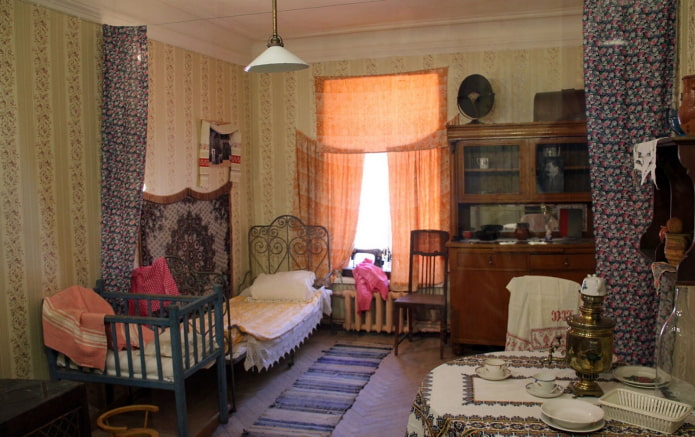
In the 1960s, with the beginning of mass construction, people had the opportunity to move out of communal apartments into a separate apartment. It was necessary to furnish their own home. The shortage and lack of goods, lack of knowledge did not allow people to recreate the interior in an ideal style. Everything was limited by the framework of Soviet fashion and what they managed to get. People did not have the opportunity to change furniture according to fashion every 10 years, so they bought one for a lifetime.
Wall units, sideboards, carpets, armchairs with wooden armrests, upholstered furniture, sofa beds, and rugs began to appear in the interior. A distinctive feature of that time was furniture on wooden legs. The herringbone pattern was popular on parquet floors. Many apartments in the Soviet era were equipped with built-in wardrobes. This reduced the amount of furniture in the interior.
In the 1970s and 1980s, the furnishings of a typical home’s living room looked like this: a sofa, two armchairs, a coffee table, a wall unit or sideboard. A patterned carpet on the floor and wall was considered a sign of wealth. The height of Soviet fashion was a polished sideboard, behind the glass facades of which stood, as if in a display case, a tea set and crystal glasses. A necessary attribute of the Soviet era is a dressing table.
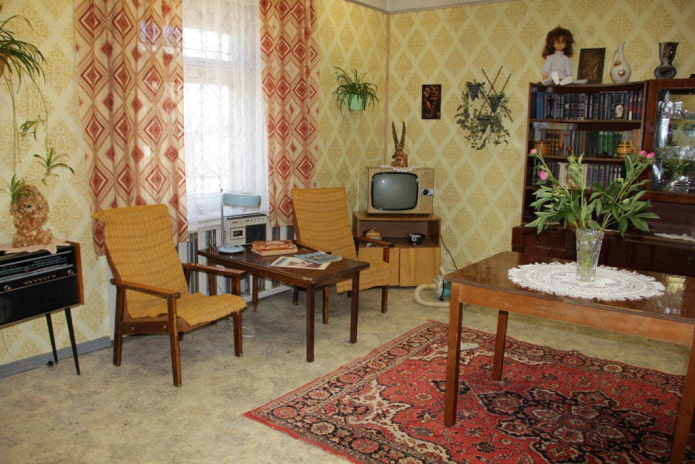
Distinctive features
To recreate in your memory the image of a real, typical Soviet style, it is enough to watch the films of those years. Plank or parquet floor, wallpaper on the walls. The ceiling is decorated with a “Cascade” chandelier with pendants.
A massive wall covering the entire wall is an interior feature of any Soviet-era apartment. Its size allowed you to store all the necessary things in it. It served as a bookcase, where a large family library was kept, and a wardrobe. A chest of drawers, a secretary and a sideboard, the glass doors of which protected the collection of crystal and porcelain from dust. These dishes were only taken out on holidays.
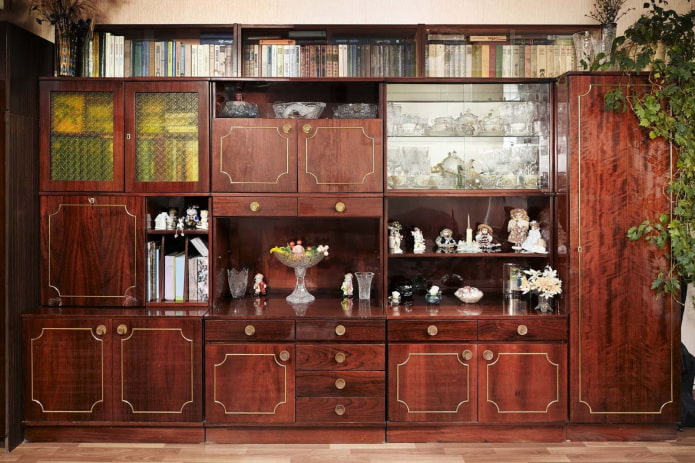
The walls and floors of many apartments of that era were decorated with patterned carpets. Traditionally, they were beaten out of dust on the street every weekend. It was fashionable to hang framed family portraits and clocks on the walls. They complemented the interior image.
There was little furniture in the Soviet kitchen. Not everyone could afford a kitchen set. The basic set of furniture consisted of a dining table with stools and a pedestal table, which served as a cooking area and allowed you to store kitchen utensils. The lampshade on the ceiling is another notable element of the Soviet style.
What color scheme was used?
The color scheme of the Soviet era was distinguished by its mediocrity. There was no variety of choice in stores, so people’s apartments were similar.
The ceiling was traditionally white, it was simply whitewashed. Sometimes blueing was added to the lime, then a slightly bluish tint was obtained. Due to the shortage, it was not easy to get good wallpaper, so the walls were often whitewashed as well.
Not only the ceiling and walls were painted white, window frames, cast-iron radiators and doors were also white.
The floorboards were painted brown, which differed only in shade. This floor color was considered practical, dirt is not so noticeable. In addition, it is similar to the natural color of wood, which looks good in any room.
Tiles for finishing the bathroom and kitchen were produced in limited colors and patterns. Main colors: white, blue, brown, green.
Those who wanted to make their interior more beautiful and interesting managed to get bright fabrics and sew curtains, tablecloths, sofa covers and pillows themselves.
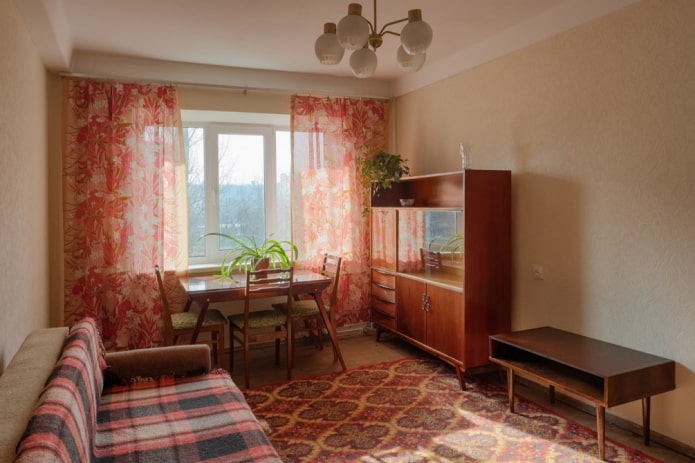
What pieces of furniture are used?
At the beginning of the 21st century, people began to get rid of Soviet-era furniture en masse. However, there are apartments where old furniture is now stored behind closed doors.
The most popular furniture of the Soviet era is considered to be:
- An armchair on thin legs with wooden armrests.
- A polished sideboard.
- A drop-leaf table or a polished table with a sliding mechanism.
- A dressing table with a mirror.
- A wall unit.
- An ottoman or a sofa with a niche for linen.
- A chest of drawers for linen.
- A kitchen sideboard.
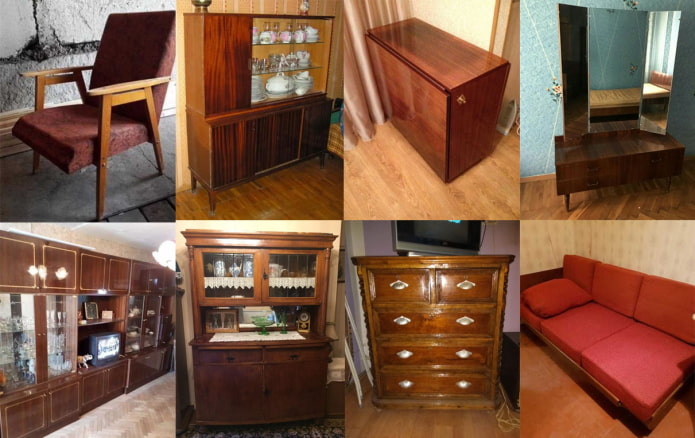
Recommendations for use in modern interior
Soviet-era furniture can be used in modern design. This should be done carefully, bringing one item per room. Such pieces of furniture are rarely used in their original form; as a rule, they need restoration, albeit minor.
Don’t rush to throw away your old linen chest of drawers. It can easily fit into the interior of any style. It’s enough to simply repaint it. There is a huge selection of materials and paints on the market that allow you to work even on polished surfaces.
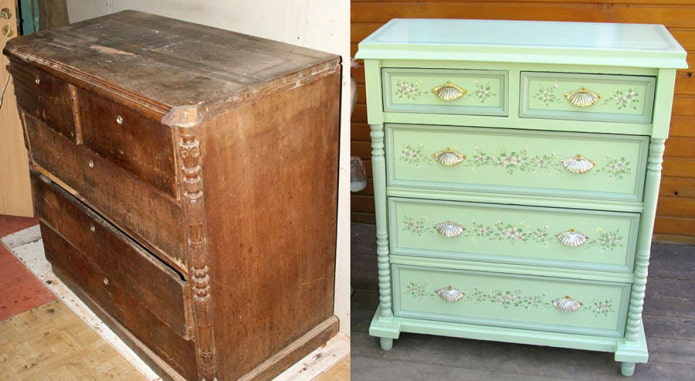
A kitchen sideboard on carved legs can complement the interior of a kitchen in the Provence style. To use the sideboard for its intended purpose, restore it and cover it with light paint.
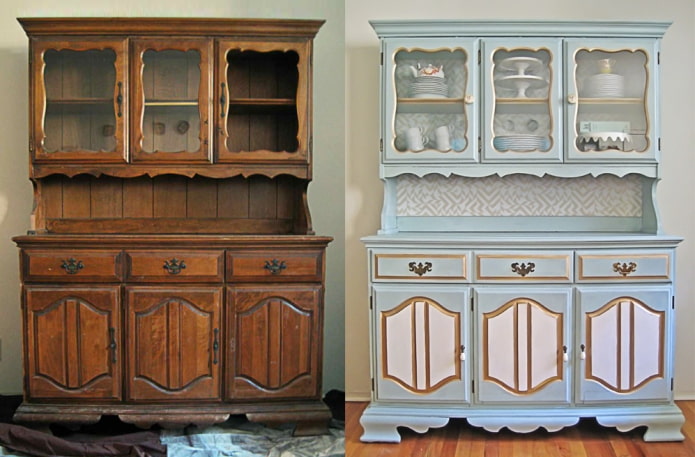
Chairs with thin legs and wooden armrests are back in fashion. Such chairs are not bulky and comfortable to sit on. They need to be restored carefully. Restoration includes: replacing foam rubber, upholstery and painting wooden parts. This chair will perfectly fit into a minimalist or loft style interior.
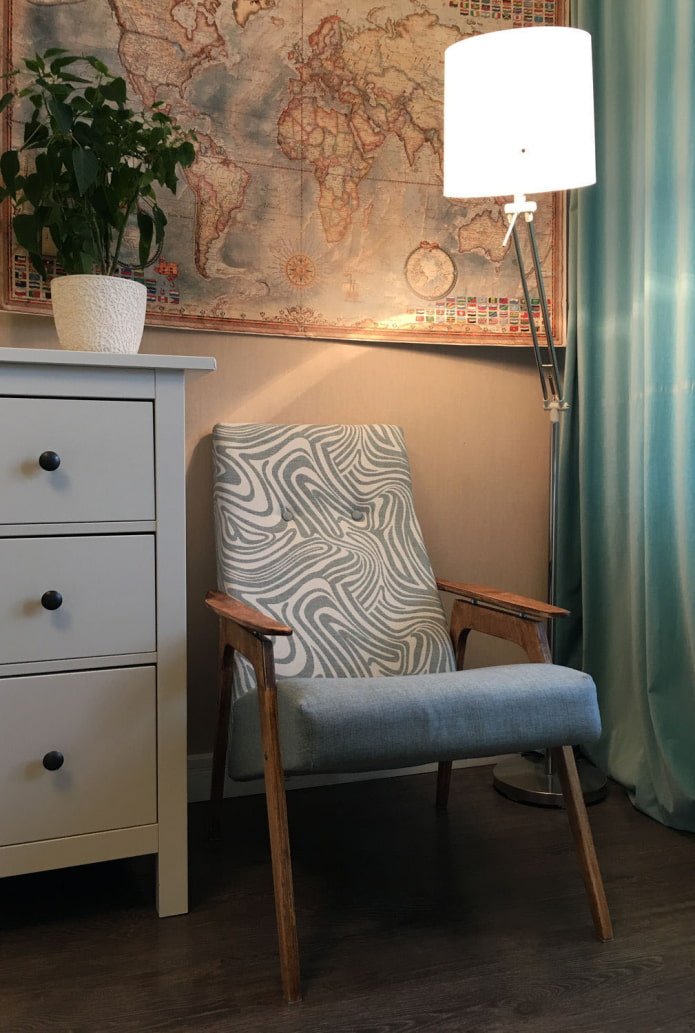
It is possible to fit an old sideboard into a modern interior. To do this, it is enough to restore and update the design. There are various decorative techniques for this: decoupage, painting, staining, decorating. The updated sideboard will get a second life in the interior of the living room or bedroom.
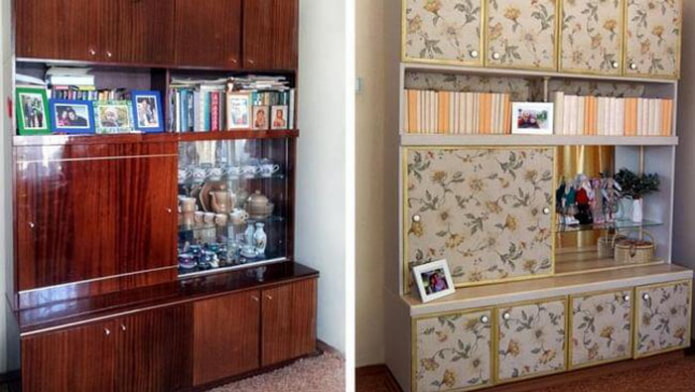
An old dressing table with a mirror can be used to make an excellent dressing mirror with light bulbs. The nightstand is restored and repainted. The mirror is decorated with lamps around the perimeter. Such a piece of furniture will decorate the interior of any bedroom.
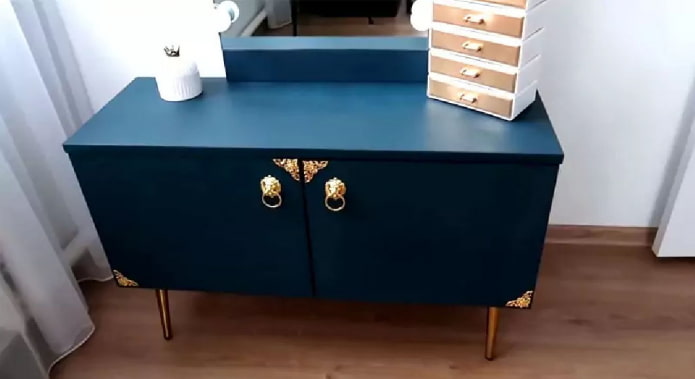
Thanks to restoration and the skillful hands of designers, Soviet furniture is getting a second life in the modern world. With good care, it can serve for many more years.
Now reading:
- Classic Bedroom: 35 Photos and Interior Design Tips.
- Choosing linoleum for the hallway: important tips for every buyer.
- Bathroom mirrors: 80 interior photos and stylish design solutions.
- Chalkboard paint for interior: 32 photos, tips on application and features
- How to determine the width of curtains correctly? – useful tips and recommendations.